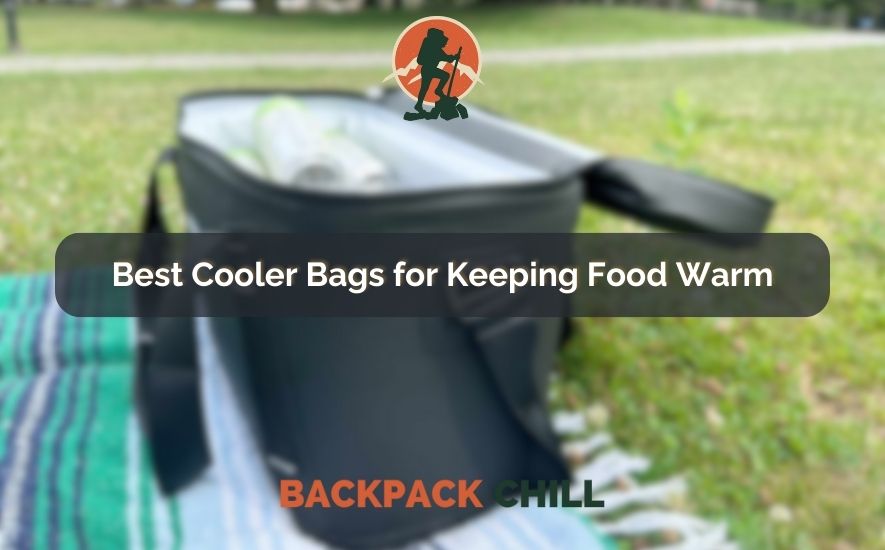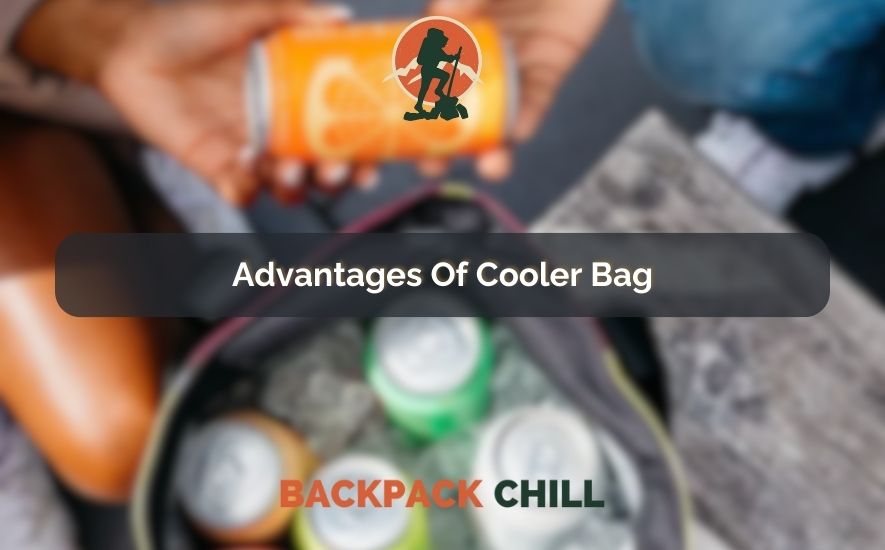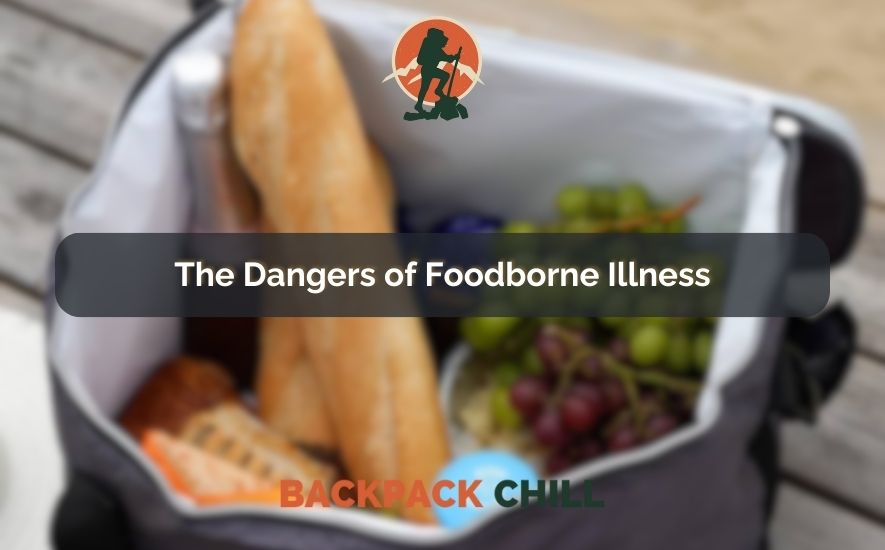Physical Address
304 North Cardinal St.
Dorchester Center, MA 02124
Physical Address
304 North Cardinal St.
Dorchester Center, MA 02124

Curious minds often wonder if a cooler bag can do more than just keep things cool – can it actually keep food warm? It’s an interesting question that taps into the practicality of this versatile travel companion. While cooler bags are designed primarily to keep items cold, there’s more to the story.
Can A Cooler Bag Keep Food Warm? While cooler bags are primarily designed for keeping items cold, they are not well-suited for keeping food warm. Their insulation is optimized for maintaining low temperatures, so they may not effectively retain heat. For keeping food warm, it’s advisable to use specialized containers designed for that purpose.
Let’s explore whether a cooler bag can be repurposed to maintain the warmth of your favorite dishes, making it a potential solution for those seeking to transport hot meals.
Also Read: Are Cooler Bags Effective in 2023
Invest in insulated containers designed to keep food warm. Place your hot dishes in these containers before putting them into the cooler bag. This extra layer of insulation helps maintain the temperature.
Before packing your hot food, preheat the cooler bag by placing a warm towel inside for a few minutes. This minimizes heat loss when you add your dishes.
Wrap your hot containers in kitchen towels or aluminum foil before placing them in the cooler bag. This provides an additional barrier against heat loss and keeps your food warmer for longer.
Fill any empty spaces in your cooler bag with extra towels, crumpled newspaper, or even more kitchen towels. The idea is to minimize air circulation, which can cause heat to escape.
If you’ll be eating soon after packing your food, consider adding a heat pack to the cooler bag. This can help maintain the warmth until it’s time to enjoy your meal.

For those seeking an advanced solution, electric heated cooler bags are a fantastic choice. They come with built-in heating elements that can be plugged into your car’s power outlet. This feature ensures your food remains warm even during longer journeys.
These versatile bags offer a combination of insulation and style. They can be used as regular tote bags and also have insulated compartments for keeping food warm. They’re great for office lunches or short trips.
Yes, you read that right! Some cooler bags even come with a mini heating component that resembles a tiny oven. They’re perfect for travelers who want to enjoy hot meals on the road without the need for microwaves.
Backpack-style cooler bags with thermal linings are excellent for keeping food warm while keeping your hands free. They’re especially handy for hiking, camping, or city explorations where you need both convenience and warmth.
Must Read: Can I Take A Cooler Bag On A Plane
The warmth of your food when you pack it plays a significant role. Hotter food initially will stay warm longer. Aim to pack your food just before leaving to maximize its warmth.
The insulation quality of your cooler bag impacts how long food can stay warm. High-quality bags with thick insulation will keep food warm longer than thinner ones.
The outside temperature and conditions also play a role. If it’s freezing outside, your food will stay warmer for a more extended period. On warmer days, the heat might dissipate faster.
How you pack your food matters. Using insulated containers, wrapping in layers, and preheating the cooler bag all contribute to extended warmth.
If you want to keep your food warm for an even longer time, consider using heat packs. These small, portable heat sources can add extra warmth to your cooler bag.

One of the primary advantages of a cooler bag is its ability to keep items cold. Whether it’s beverages, snacks, or perishable groceries, cooler bags help maintain their freshness by controlling the temperature.
Cooler bags are designed to be lightweight and easy to carry. With comfortable handles or straps, they are convenient to take along on outings, road trips, hikes, or even to work.
These bags aren’t just limited to keeping things cold. Many cooler bags come with insulating properties that can help keep items warm, making them suitable for carrying hot meals or drinks.
Packing your own snacks and meals in a cooler bag can save you money, especially when traveling or spending time outdoors. You won’t need to rely on expensive airport or fast-food options.
By using a cooler bag to carry your food and drinks, you reduce the need for single-use plastic bags or containers. This simple choice contributes to reducing waste and your environmental footprint.

Bacteria, viruses, and parasites can contaminate food if it’s not handled, prepared, or stored properly. Consuming these contaminated foods can lead to foodborne illnesses, resulting in symptoms like nausea, vomiting, diarrhea, and even more severe health issues.
The transfer of harmful microorganisms from one surface to another, often through utensils, cutting boards, or hands, can cause cross-contamination. This can lead to the spread of pathogens from raw to cooked foods, increasing the risk of illness.
When food is stored or cooked at incorrect temperatures, it provides an ideal breeding ground for bacteria to multiply rapidly. Food left at room temperature for too long can result in bacterial growth that can cause illness.
Failing to practice proper hygiene, such as washing hands before handling food or using the same cutting board for different types of foods, can introduce harmful pathogens to your meals.
To avoid the dangers of foodborne illness, it’s crucial to practice safe food handling and preparation. This includes washing hands, cooking foods to recommended temperatures, avoiding cross-contamination, and refrigerating perishable items promptly.
In the world of travel and meal transportation, cooler bags play a significant role. From keeping your beverages chilled on a sunny day to preserving the freshness of your favorite dishes, these bags offer both advantages and disadvantages.
While they provide convenience and portability, it’s essential to remember their limitations, like their ability to keep food warm for extended periods or the reliance on ice packs. Striking a balance between their benefits and drawbacks can help you make informed choices according to your needs.
Yes, a cooler can be used to keep food warm, but it’s important to note that coolers are primarily designed to keep items cold. To use a cooler for warmth, you can follow some strategies like preheating the cooler with warm water, wrapping food in towels or aluminum foil, and using insulated containers.
While a cooler might not maintain high temperatures for an extended period, these techniques can help keep your food warmer for a little while.
The duration food can stay in a cold bag depends on various factors, including the initial temperature of the food, the insulation quality of the bag, and the outside temperature. In general, perishable foods should not be kept at room temperature for more than 2 hours.
If the outside temperature is higher, the time decreases to 1 hour. It’s essential to prioritize food safety and promptly refrigerate or consume perishable items to avoid the risk of foodborne illness.
To keep food warm for hours, you can use insulated containers, thermal bags, or even heated containers designed for this purpose. Wrapping the containers in towels or aluminum foil can add an extra layer of insulation.
Preheating the container or bag with warm water before placing the food inside helps retain warmth. In some cases, electric heated bags or mini ovens can be used to maintain higher temperatures over longer periods.
Cooler bags are primarily designed to keep items cold, but they might not be able to maintain temperatures low enough to keep food frozen for extended periods. If you need to transport frozen food, it’s recommended to use a proper freezer bag or a cooler with sufficient insulation and ice packs to ensure the food remains frozen.
To turn a cooler into a food warmer, you can preheat the cooler with warm water before placing the warm food inside. Wrapping the food in towels or aluminum foil adds insulation. Using insulated containers and even heat packs can help maintain the temperature.
However, it’s important to note that while these techniques can help keep food warm for a limited time, they might not replace proper food warming appliances for longer durations.
A cooler bag and an insulated bag share the common feature of maintaining temperature, but they are designed for different purposes. A cooler bag is primarily designed to keep items cold, often with compartments for ice packs to maintain a lower temperature.
An insulated bag, on the other hand, can help keep items warm by preventing heat loss. It’s essential to choose the right bag based on your intended use – a cooler bag for keeping items cold and an insulated bag for maintaining warmth.